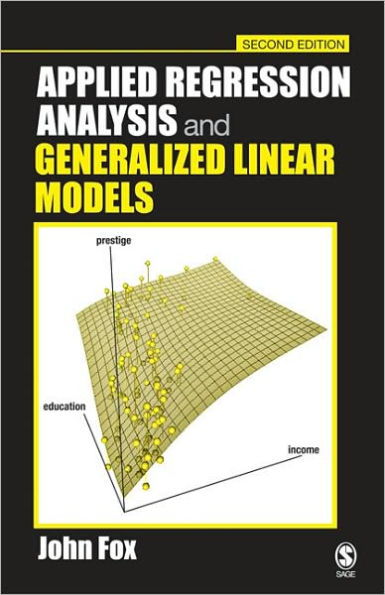Applied Regression Analysis and Generalized Linear Models / Edition 2 available in Hardcover

Applied Regression Analysis and Generalized Linear Models / Edition 2
- ISBN-10:
- 0761930426
- ISBN-13:
- 9780761930426
- Pub. Date:
- 04/16/2008
- Publisher:
- SAGE Publications
- ISBN-10:
- 0761930426
- ISBN-13:
- 9780761930426
- Pub. Date:
- 04/16/2008
- Publisher:
- SAGE Publications

Applied Regression Analysis and Generalized Linear Models / Edition 2
Hardcover
Buy New
$136.00Buy Used
$87.40-
-
SHIP THIS ITEM
Temporarily Out of Stock Online
Please check back later for updated availability.
-
Overview
Linear models, their variants, and extensions are among the most useful and widely used statistical tools for social research. The Second Edition of Applied Regression Analysis and Generalized Linear Models provides an accessible, in-depth, modern treatment of regression analysis, linear models, and closely related methods.
Author John Fox makes the text as user-friendly as possible: With the exception of three chapters, several sections, and a few shorter passages, the prerequisite for reading the book is a course in basic applied statistics that covers the elements of statistical data analysis and inference. Even relatively advanced topics (such as methods for handling missing data and bootstrapping) are presented in a manner consistent with this prerequisite.
Key Features of the Second Edition
- Covers regression models--such as generalized linear models, limited-dependent-variable-models, mixed models and Cox regression--and methods that are increasingly being used in social science research
- Contains a more robust Web site with extensive appendices of background material (matrices, linear algebra, vector geometry; calculus; probability and estimation); data sets used in the book and for data analytic exercises; and the data-analytic exercises themselves.
- Incorporates real data from the social sciences that is similar to data readers are likely to encounter.
This book should be of interest to students and researchers in the social sciences, as well as other disciplines that employ linear models for data analysis, and in courses on applied regression and linear models where the subject matter ofapplications is not of special concern.

Product Details
| ISBN-13: | 9780761930426 |
|---|---|
| Publisher: | SAGE Publications |
| Publication date: | 04/16/2008 |
| Edition description: | Second Edition |
| Pages: | 688 |
| Product dimensions: | 7.10(w) x 10.10(h) x 1.70(d) |



